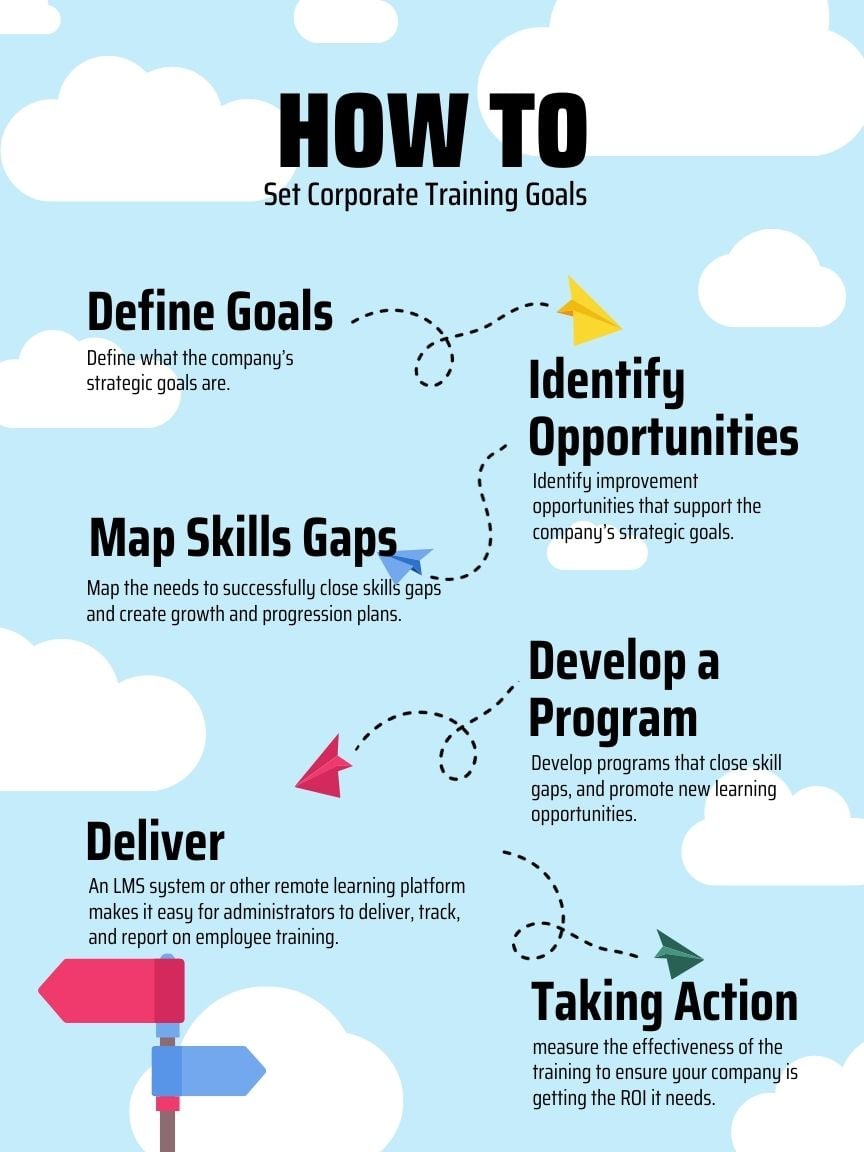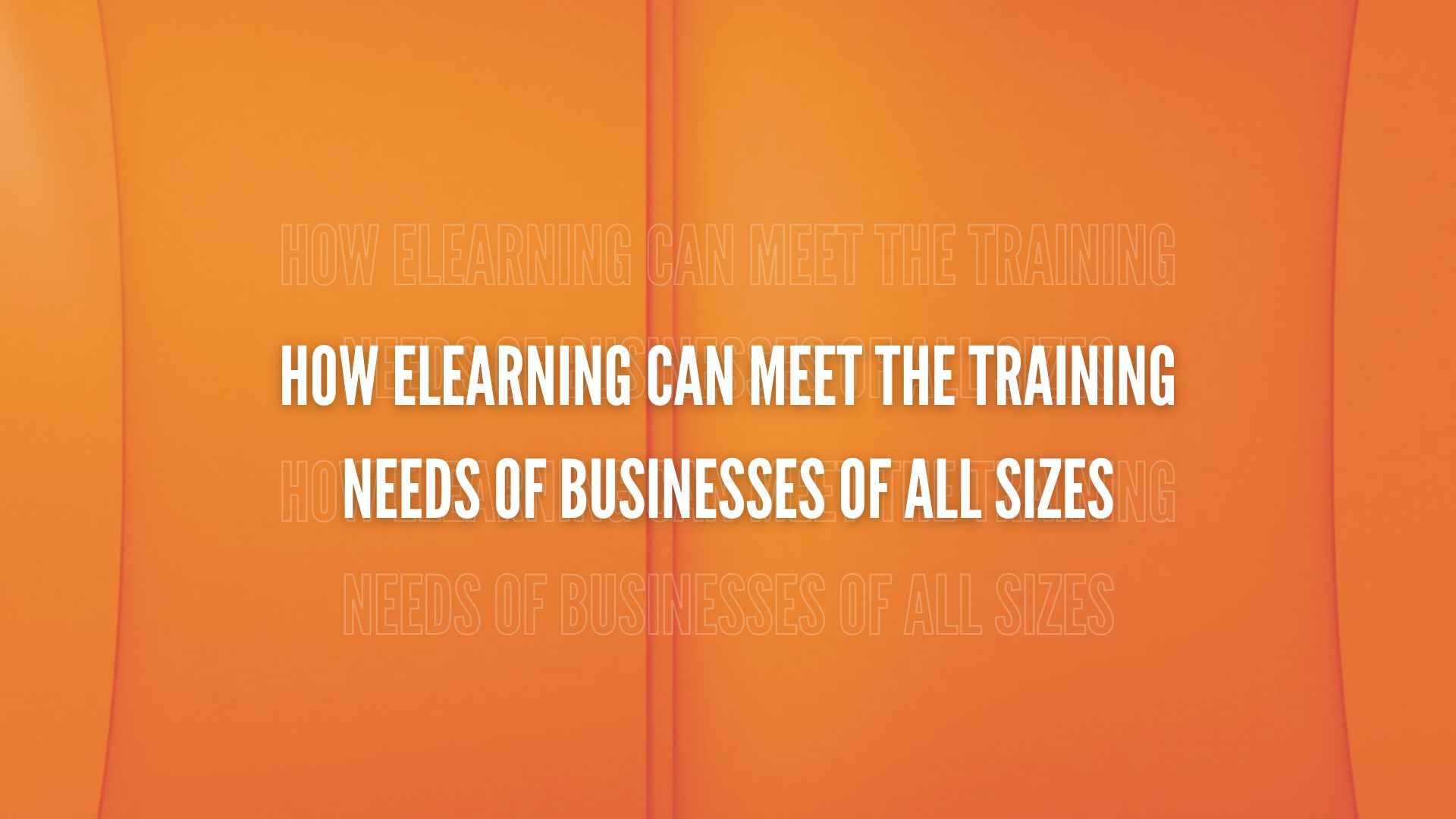Establishing new corporate training objectives each year is important. Designing Digitally said this simple practice can save companies money and time, as well as smooth out the implementation of training.1 When you set training goals “You are aware of the materials you need for the design and development phase,” Designing Digitally stated. “The objectives will help your employees be aware of what is expected of them. That way they can plan ahead so that the time spent on the learning is productive.”
Are your company’s corporate training goals set for 2022? If not, it isn’t too late to get started on them.
The Importance of Aligning Corporate Training With Business Goals
Having an awareness of your organization’s business goals is a critical first step to creating new corporate training objectives. When training is aligned with business goals, it helps employees better understand and support the company’s mission.
To align training with business goals, it’s essential that L&D and HR departments are in communication with other organizational departments. Communication is key when creating training goals that align with business goals. Opening up lines of communication by letting supervisors across all departments know corporate training objectives are being created for the year is helpful.
Employee training should always serve the organization’s goals as well as meet the needs of learners by providing them with the skills necessary to do their jobs. HR Daily Advisor2 listed a few ways to ensure training supports an organization's goals:

1) Define what the company’s strategic goals are. This is the first step to creating a set of corporate training goals for the year.
2) Identify improvement opportunities that support the company’s strategic goals. This will help you create a project roadmap and a set of corporate training objectives that gets results.
3) Map the needs to successfully close skills gaps. “For example, a company that has a problem with the quality of its end products might need to develop greater skills in process improvement and quality control.” Keep these skills in mind when creating your list of corporate training goals for 2022.
4) Develop a corporate training program. An LMS system can help you do this. Training should provide employees with the skills they need to serve the organization’s business goals. Also, pre-existing training should be tweaked to reflect current business goals.
5) Deliver training. An LMS system or other remote learning platform makes it easy for administrators to deliver, track, and report on employee training.
6) After a few months, measure the effectiveness of the training to ensure your company is getting the ROI it needs. Modify training based on the results.
Pro tip: Before setting this year’s corporate training objectives, define what your organization’s business goals are.
Understanding Current Trends in Corporate Learning Can Help You Set More Effective Training Goals
Defining your organization’s business goals is just the first step to creating a set of corporate training objectives for the year. The second step is getting an idea of what the current trends in corporate learning are, and how they will likely change over the course of the year.
Some of 2022’s corporate training trends are similar to those of 2021, and some are different. The blog article 6 Exciting Corporate Training Trends to Look Out for in 20223 cited the following trends in corporate learning for the current year:
- Virtual Reality Training Will Become More Realistic
- Diversity, Equity, And Inclusion Training Will Continue To Be Prioritized
- More Mixed Reality-Enhanced Virtual Reality Is On The Horizon
- Organizations Will Continue To Expand Access Options To Reach Remote Learners
- Augmented Reality And Virtual Reality Will Continue To Trend
- Increased Demand For Interactive Learning Elements
By understanding corporate learning trends, you can deliver the type of training that learners want. For example, since there is an increased demand for interactive learning this year, your L&D team should consider adding more interactive elements to online training courses. Quizzes, assessments, games, scenarios, videos, and simulations are some examples of interactive elements that could be included in a corporate training program.
As noted above, another trend to stay aligned with in 2022 is diversity, equity, and inclusion training. “Over 80% of employees want to work for an organization that values diversity, equity and inclusion (DEI),” stated Roundtable Learning.4 That means the majority of your employees want to work for a diverse company. DEI training supports diversity. A contributor to Roundtable Learning gave an example of DEI training:
“...in a leadership training activity, organizations may include a scenario where a team member makes a discriminatory comment toward another employee’s work. The learner must then decide how to appropriately address the situation. This activity builds effective leaders who can lead their team with an inclusive mindset.”
As the year plays out, continue to keep an eye on corporate learning trends to see how they are changing. Whenever possible, and if it would be helpful, modify your company’s training to reflect changing trends in corporate learning.
Pro tip: Align your company’s training goals with current trends in corporate learning to drive learner engagement.
Tips for Setting Corporate Training Goals for 2022
Once you have defined your organization's business goals and understand current corporate learning trends, it’s time to set some corporate training objectives for the year. Here are a few tips to help you accomplish this:
1) Make training goals as detailed as possible - The more detailed your training goals are, the more likely it is that they will be met. A detailed training goal will also be easier to measure in the future.
“‘To improve customer satisfaction in the future’ is an example of vague phrasing that does not enable measurement,” explained Training Industry.5 “Clearer phrasing for the same goal is, ‘to solve customer queries 50% faster by training staff on the new support process.’”
To get more detailed with your training objectives, try to cut their wording in half.
2) Include learners in the process - When setting corporate training goals, don’t forget to include employees/learners. They are the ones who will be interacting with the training. If it doesn’t benefit them personally, learner engagement will be low, and so will your company’s ROI for training.
You can include learners in the process of creating a set of corporate training goals by asking them via survey which goals are most important to them (give them, say, 10 objectives and ask them to choose 3). This will help you narrow down your training objectives and drive learner engagement.
3) Assess learners’ job performance - Performing job-related assessments should be part of setting effective corporate training goals. This can give you a baseline for what skills are most needed and what learning objectives are most important. It’s also helpful to assess workers’ personality types and learning styles.
“Common job-related assessments to consider include task analysis, personality analysis, performance analysis or content analysis,” explained an article by Indeed.com.6 “For example, a personality analysis gives you a better idea of the specific skills and abilities of an individual employee as well as their learning style.”
The article said these insights can help companies create training goals that take each employee’s needs into account. This could promote learner engagement and skills acquisition.
Pro tip: It’s never too late to set corporate training goals for the year. Get started today.
Deliver Corporate Training the Easy Way With an LMS System
Setting corporate training goals is only half the battle. The other half is creating or purchasing the training and deploying it. Often, the quickest and most cost-effective way of obtaining training is to buy it from a third-party vendor. If you need a training course that is very personalized to your organization, it is best to create it in house.
When you’re ready to deploy training content that supports your organization’s business goals, consider using the TOPYX Quick Start Program. With TOPYX Quick Start, you can use a full-featured LMS system to begin increasing your employees’ skills rapidly. TOPYX Quick Start helps organizations set up and fully deploy an LMS system within days.
With in-depth learning features and pre-built content to support remote workers and develop skills, TOPYX Quick Start includes everything you need to get started with a learning and development program for up to 500 learners available through a unique flat-rate pricing model.
TOPYX Quick Start includes essential LMS system features such as:
- Learning paths
- Social learning
- Mobile learning
- Learning catalog
These features are especially beneficial to learners. For example, mobile learning makes it possible for employees to access training on their mobile device at any time, from any place. A good Corporate LMS is critical to setting up and meeting corporate training goals.
Also, the following TOPYX LMS system features, included with TOPYX Quick Start, are often helpful to administrators:
- Reporting and dashboards
- Certifications
- Content management
- LMS integrations
- Services and add-ons
TOPYX Quick Start is used by companies across many different industries. Examples include corporate, financial, healthcare, manufacturing, nonprofit, retail, sales/services, SMEs, and technology.
Interested in TOPYX Quick Start? Request a free LMS system demo.
References:
- Designing Digitally. https://www.designingdigitally.com/blog/2019/03/how-establish-objectives-corporate-training.
- HR Daily Advisor. https://hrdailyadvisor.blr.com/2020/04/24/how-to-achieve-alignment-between-training-and-company-objectives/.
3, 4. Roundtable Learning. https://roundtablelearning.com/6-exciting-corporate-training-trends-for-2022/.
- Training Industry. https://trainingindustry.com/blog/content-development/4-tips-for-setting-effective-learning-goals/.
- Indeed.com. https://www.indeed.com/career-advice/career-development/training-goals.





